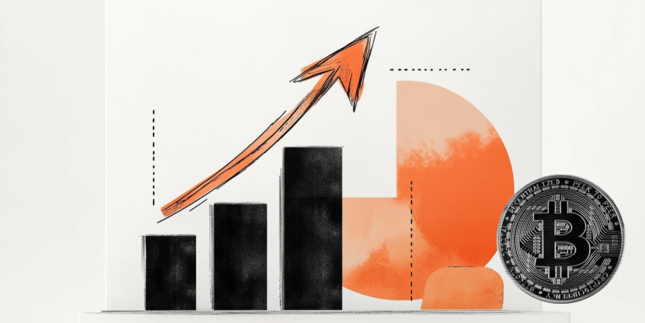- EUR/JPY loses traction to near 159.50 in Wednesday’s Asian session.
- The Japanese PPI came in stronger than expected, boosting the JPY.
- The uncertainty over how soon the BoJ could raise rates might cap the downside for the cross.
The EUR/JPY cross attracts some sellers to around 159.50 during the early European session. The Japanese Yen (JPY) strengthens against the Euro (EUR) after the stronger-than-expected Japanese Producer Price Index (PPI) for November. The European Central Bank (ECB) interest rate decision will be in the spotlight on Thursday.
The preliminary reading by the Bank of Japan (BoJ) showed on Wednesday that the country’s Producer Price Index (PPI) increased by 0.3% MoM in November, better than the 0.2% expected. On an annual basis, the PPI rose by 3.7% YoY during the same reported period, above the market consensus of 3.4%.
Furthermore, the expectation that the ECB will implement aggressive interest rate cuts to prop up the faltering regional economy could weigh on the shared currency. The ECB is widely expected to cut the deposit facility by another 0.25% to 3.00%. This expectation aligns with the ECB’s strategy to guide inflation toward its 2% target against a backdrop of weaker economic growth in the Eurozone.
Nonetheless, the dovish remarks from the Japanese authorities might undermine the JPY and cap the downside for the cross. BoJ’s board member Toyoaki Nakamura said last week that the central bank must move cautiously in raising rates, fueling uncertainty about the BoJ’s December policy decision.
ECB FAQs
The European Central Bank (ECB) in Frankfurt, Germany, is the reserve bank for the Eurozone. The ECB sets interest rates and manages monetary policy for the region. The ECB primary mandate is to maintain price stability, which means keeping inflation at around 2%. Its primary tool for achieving this is by raising or lowering interest rates. Relatively high interest rates will usually result in a stronger Euro and vice versa. The ECB Governing Council makes monetary policy decisions at meetings held eight times a year. Decisions are made by heads of the Eurozone national banks and six permanent members, including the President of the ECB, Christine Lagarde.
In extreme situations, the European Central Bank can enact a policy tool called Quantitative Easing. QE is the process by which the ECB prints Euros and uses them to buy assets – usually government or corporate bonds – from banks and other financial institutions. QE usually results in a weaker Euro. QE is a last resort when simply lowering interest rates is unlikely to achieve the objective of price stability. The ECB used it during the Great Financial Crisis in 2009-11, in 2015 when inflation remained stubbornly low, as well as during the covid pandemic.
Quantitative tightening (QT) is the reverse of QE. It is undertaken after QE when an economic recovery is underway and inflation starts rising. Whilst in QE the European Central Bank (ECB) purchases government and corporate bonds from financial institutions to provide them with liquidity, in QT the ECB stops buying more bonds, and stops reinvesting the principal maturing on the bonds it already holds. It is usually positive (or bullish) for the Euro.
Information on these pages contains forward-looking statements that involve risks and uncertainties. Markets and instruments profiled on this page are for informational purposes only and should not in any way come across as a recommendation to buy or sell in these assets. You should do your own thorough research before making any investment decisions. FXStreet does not in any way guarantee that this information is free from mistakes, errors, or material misstatements. It also does not guarantee that this information is of a timely nature. Investing in Open Markets involves a great deal of risk, including the loss of all or a portion of your investment, as well as emotional distress. All risks, losses and costs associated with investing, including total loss of principal, are your responsibility. The views and opinions expressed in this article are those of the authors and do not necessarily reflect the official policy or position of FXStreet nor its advertisers. The author will not be held responsible for information that is found at the end of links posted on this page.
If not otherwise explicitly mentioned in the body of the article, at the time of writing, the author has no position in any stock mentioned in this article and no business relationship with any company mentioned. The author has not received compensation for writing this article, other than from FXStreet.
FXStreet and the author do not provide personalized recommendations. The author makes no representations as to the accuracy, completeness, or suitability of this information. FXStreet and the author will not be liable for any errors, omissions or any losses, injuries or damages arising from this information and its display or use. Errors and omissions excepted.
The author and FXStreet are not registered investment advisors and nothing in this article is intended to be investment advice.
Recommended content
Editors’ Picks

AUD/USD oscillates in a range below 0.6300 amid mixed cues
AUD/USD struggles to build on the previous day's positive move and remains below the 0.6300 mark ahead of Trump's tariffs announcement later this Wednesday. In the meantime, the cautious market mood lends some support to the safe-haven USD and caps the upside for the pair.

USD/JPY remains below 150.00 as traders await Trump's tariffs
USD/JPY regains positive traction on Wednesday as receding bets that the BoJ would raise the policy rate at a faster pace undermine the JPY. Spot prices, however, remain confined in the weekly range as traders wait on the sidelines ahead of Trump's reciprocal tariffs announcement.

Gold price holds comfortably above $3,100 amid trade jitters
Gold price attracts some dip-buyers following the previous day's retracement slide from the record high amid persistent safe-haven demand, bolstered by worries about a tariff-driven global economic slowdown. Furthermore, Fed rate cut expectations and the lack of USD buying interest offer additional support to the XAU/USD.

US Government to conclude BTC, ETH, XRP, SOL, and ADA reserves audit next Saturday
Bitcoin price rose 3% on Tuesday, as MicroStrategy, Metaplanet and Tether all announced fresh BTC purchase. However, BTC price is likely to remain volatile ahead of the anticipated disclosure of U.S. government crypto holdings, which could fuel speculation in the coming days.

Is the US economy headed for a recession?
Leading economists say a recession is more likely than originally expected. With new tariffs set to be launched on April 2, investors and economists are growing more concerned about an economic slowdown or recession.

The Best brokers to trade EUR/USD
SPONSORED Discover the top brokers for trading EUR/USD in 2025. Our list features brokers with competitive spreads, fast execution, and powerful platforms. Whether you're a beginner or an expert, find the right partner to navigate the dynamic Forex market.

